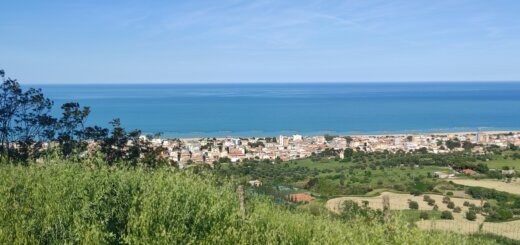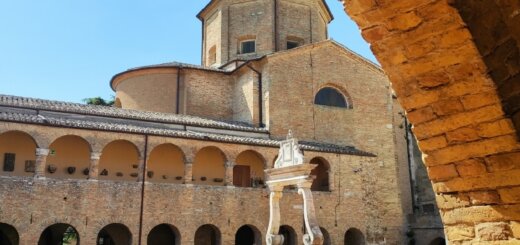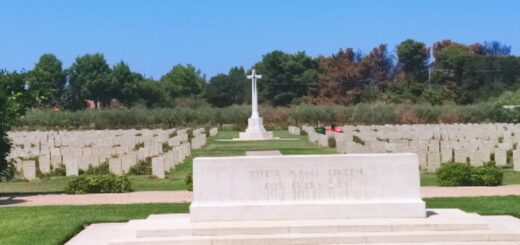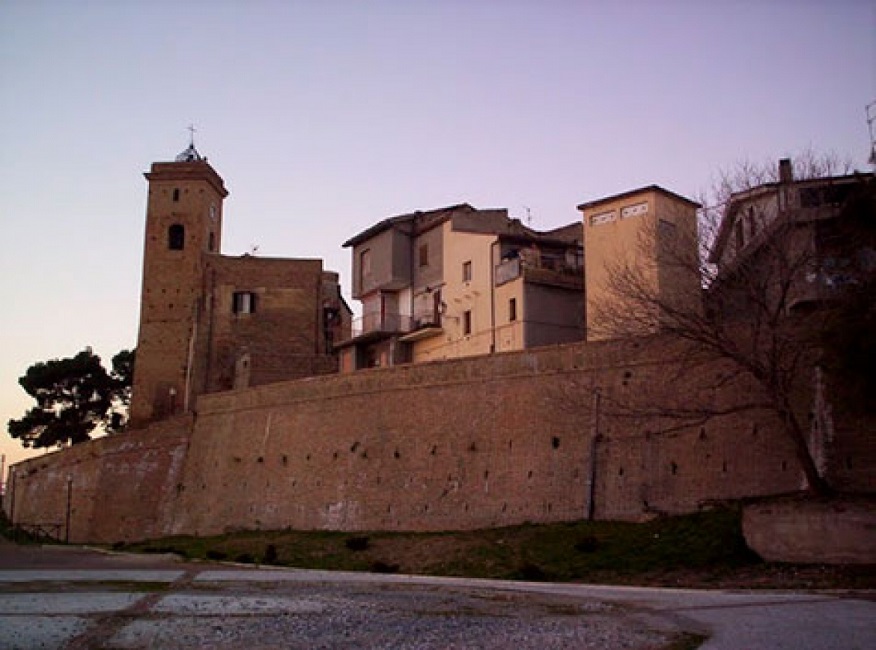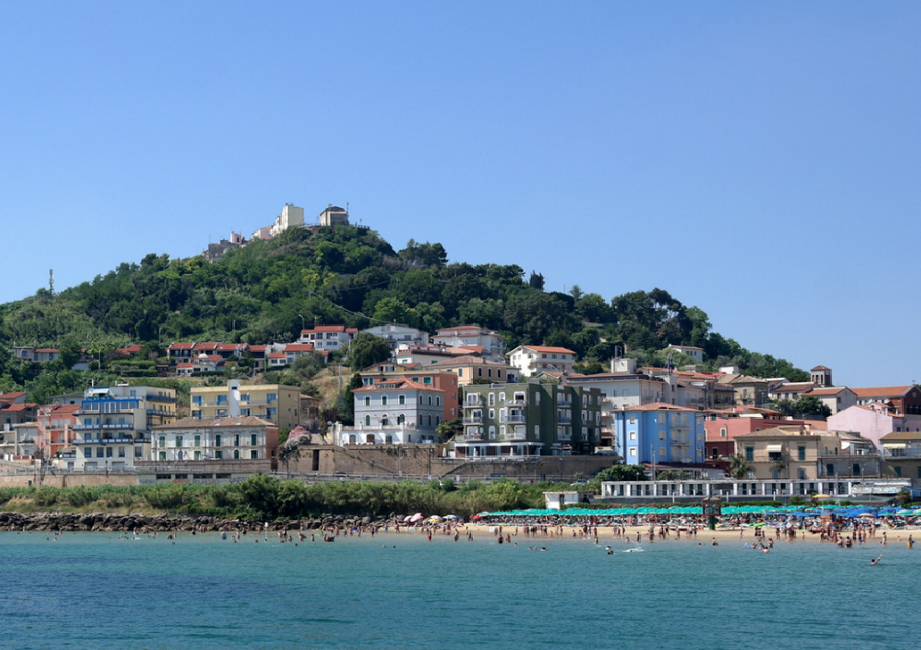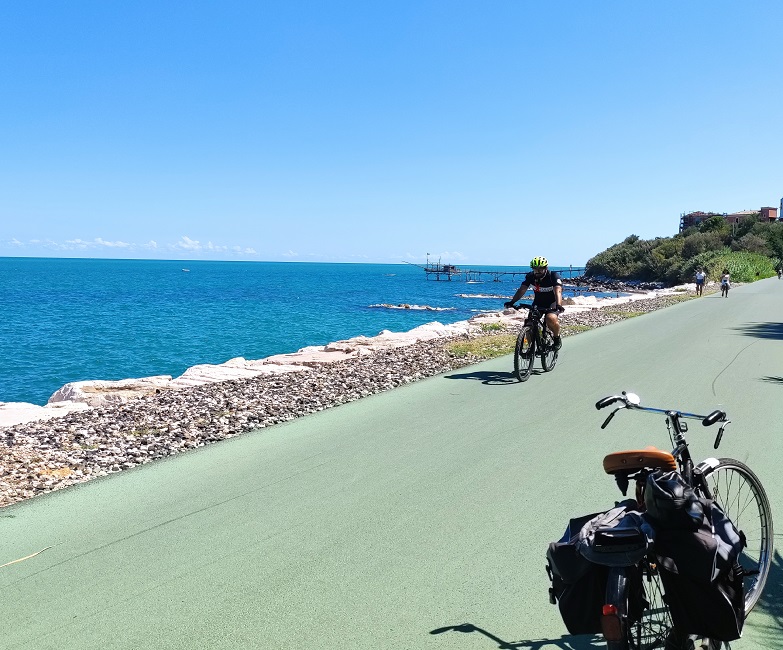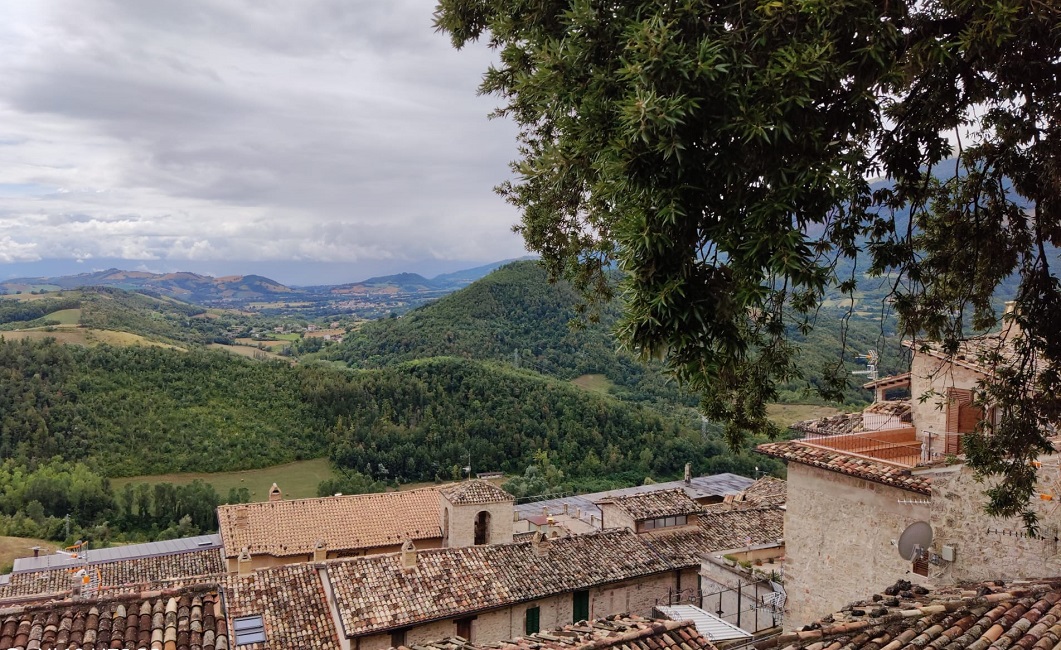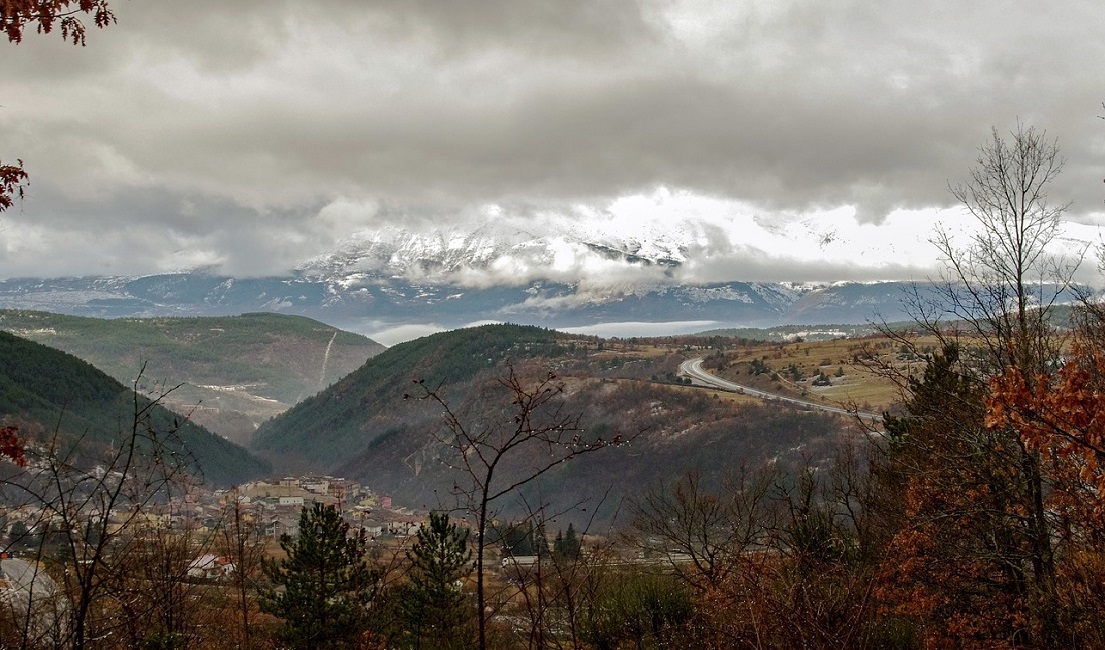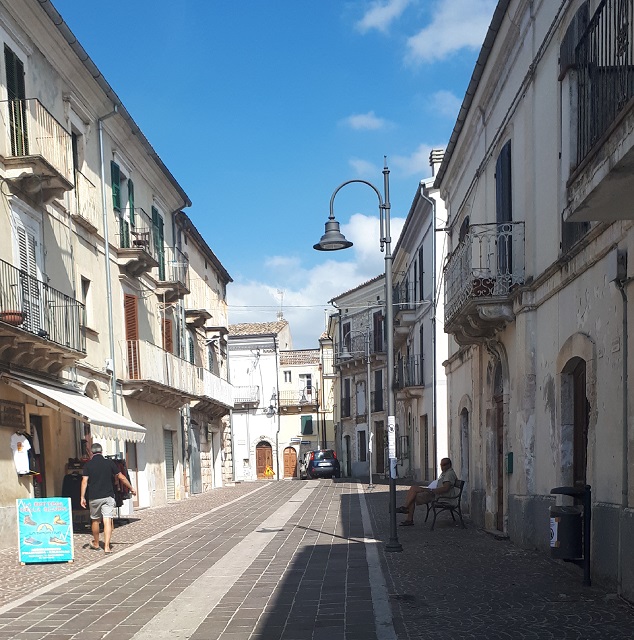Città Sant’Angelo
City of Angels, Mojito, and the Bones of Wild Beasts
In Città Sant’Angelo one might hope to see angels. Or even saints. What I wasn’t expecting was an elephant’s tusk.
Strange Beasts
But here it is in full view in the little Civic Museum. Though broken in two places, it lies protected in its special glass casket against a backdrop of an artist’s impression of its owner roaming the wilds. The kind young man who is pleased to welcome visitors to the museum tells me it was found in 1977 when the motorway was being built.

But how did it get here? I want to know. According to our guide it probably dates back to 75,000 to 125,000 years ago, when not only straight-tusked elephants but also rhinoceros and hippos roamed the area. How amazing. Their fossils have been found along the coast, where during the Pleistocene era there were vast areas of marshland.
The elephant’s tusk is perhaps the most interesting exhibit on show in this neat little museum, which also has a selection of ‘chinocchje’, small religious statuettes.

The Museum is housed in the former Church of San Salvatore right at the very end of the long main street.

San Michele Arcangelo
The loss of one church to a museum, I think, is unlikely to have made much of a dent in the religious life of this lovely hill town, where churches abound.
The main one is the collegiate church of San Michele Arcangelo, built in the fourteenth century over a pre-existing ninth century church. Its bell tower has been rebuilt several times due to earthquakes in L’Aquila and Sulmona and even now, following the last disastrous earthquake in 2016, it is protected by a cage of scaffolding.

It is probably to the holiest of angels, St Michael, around whom a cult developed in Italy in the fifth century, that the town owes its name. Statues of the saint abound, including one in a small chapel which stands on the site of the original church.

We arrive in the church just after a wedding and a man who has been sweeping up rice comes to speak to us. Pointing to two frescoes to the rear of the nave, he says that the whole church is probably frescoed under its current plaster coating. The frescoes above us are likewise hidden under a coffered ceiling.
We notice the organ is missing. Gone to Verona, says our new friend, to be repaired. The organ, he says with some pride, has 1120 pipes. That must make some sound, I think, and make a mental note to come back and hear it sometime.
The Old Town
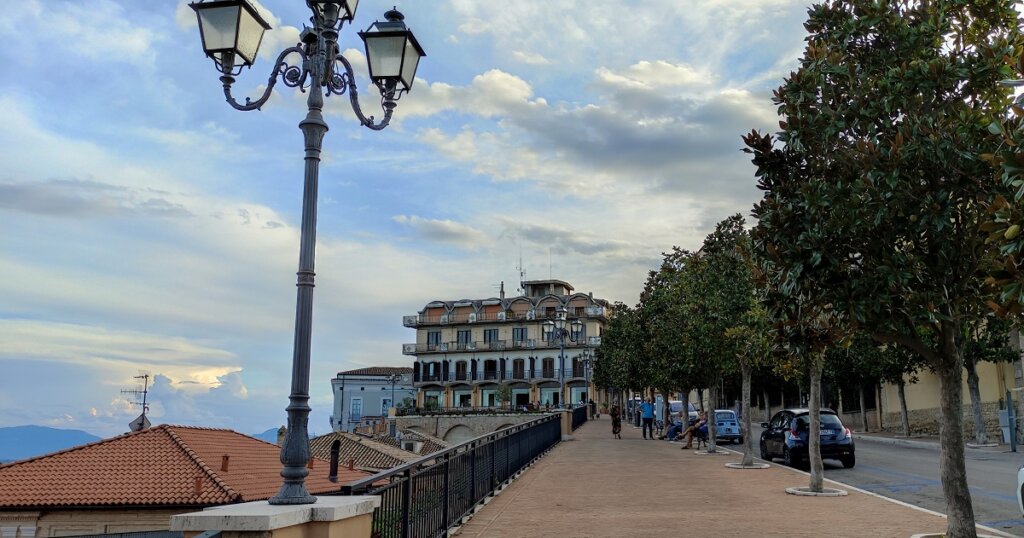
Over the years much of the land between Città Sant’Angelo on the hill and its younger coastal sister has disappeared under buildings and the road from the plain now winds up past smart new villas and modern apartments.
It ends in a small, tranquil green park with views over the countryside to the sea, and in the opposite direction, the pedestrian street that climbs into the old town, flanked by churches, convents and traditional houses with tight balconies. Narrow lanes, called li ruve in dialect, intersect the street.
Mojito, 3 Euro
It is a June evening and the air is soft and fragrant with jasmine. Above the roofs scores of martins dart back and forth, flashing silver. We stop at a bar with a sign announcing Mojito, 3 euro. Inside, the bar is cramped and dark. Behind the counter the barmaid is drawing a couple of beers and when we give her our order she invites us with a friendly smile to take a seat outside.
Once we are seated she comes out and plucks a bunch of fresh mint from a ceramic pot near the door. A few minutes later the drinks arrive in tall glasses with slices of lime and the fresh mint floating on the top. The next hour passes peacefully as we sit sipping our drinks, enjoying the warmth of early summer, half-listening to the banter of a few locals at the next table, worrying about nothing at all.
It takes an effort but soon we are on the road again.
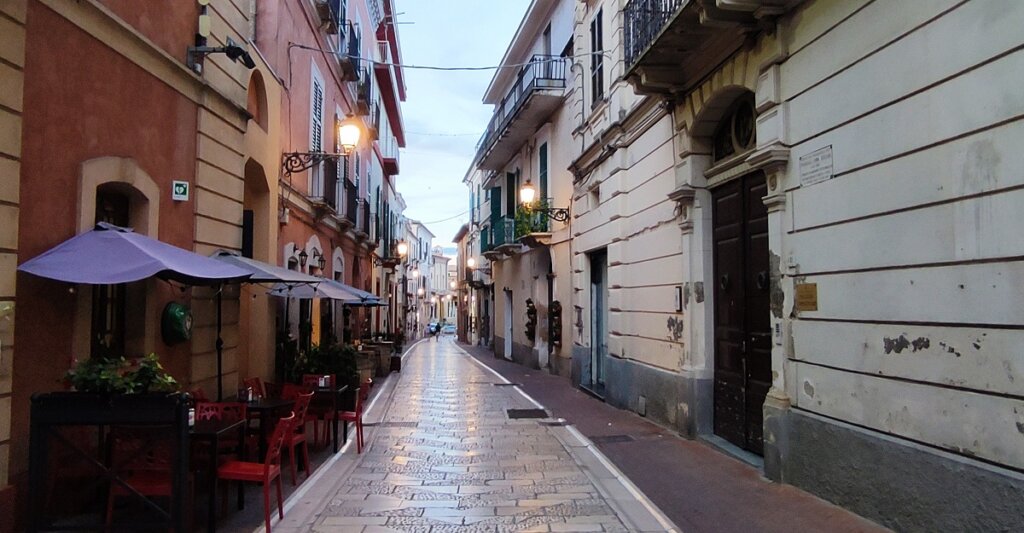
We visit churches.

We peek through open doorways and find ourselves in charming inner courtyards with winding stairs leading to the upper floors. The houses are old and modest but everything is well swept, well kept. Flowers cascade from window boxes. Benches are placed strategically so we can sit and contemplate the view, on one side the magnificent Gran Sasso, on the other the coastal plain.
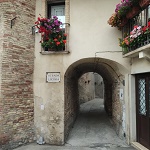
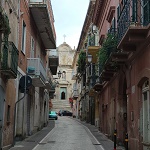
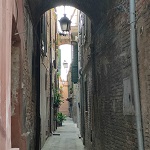
Past the church of Sant’Agostino, at the end of the main street, and up and over the hill, we come to the old ghetto, now a narrow street of quaint houses.
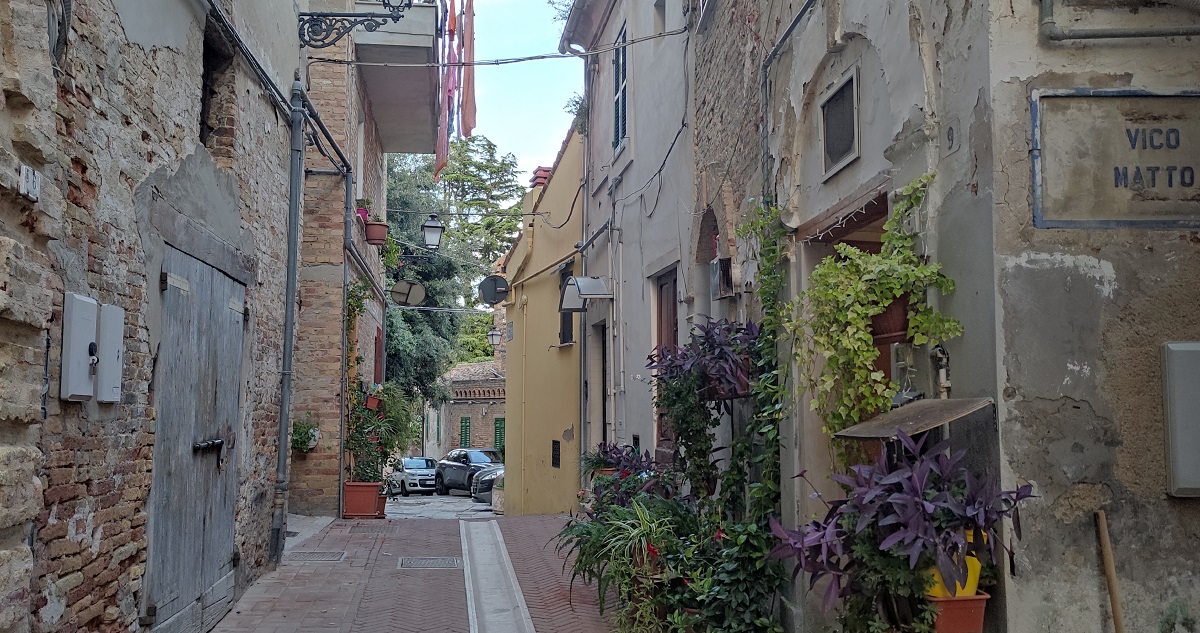
All hill towns where traffic is limited or non-existent exude a sense of peace and harmony and Città Sant’Angelo is no exception. The people are mellow and laid back. These qualities are illustrated in a story from the second World War, when the tobacco factory just outside town was turned into a prison camp, mostly housing men from ex-Yugoslavia. As a concentration camp it was an abject failure because the friendly disposition of the local people made the prisoners’ lives a lot more bearable than their captors had intended.
Dall’Etna al Gran Sasso
Much as I love its peacefulness, I can’t mention Città Sant’Angelo without a reference to the ten days in July when it becomes the lively venue of my favourite sagra, ‘Dall’Etna al Gran Sasso’ which celebrates the twinning of the town with Nicolosi in Sicily. Pandemic permitting, this usually quiet haven caters for an invasion of aficionados who come from afar to eat fried seafood and arrosticini at the Abruzzo stalls, and arancini at the Sicilian ones. Every night there are bands, dancing displays, dialect theatre performances and sometimes even bagpipes, and at midnight on the last night a breathtaking pyrotechnic display which, one year, became even more spectacular when the trees caught fire in the middle of town.
A little excitement, once in a while, can be a good thing.
Città Sant’Angelo is north of Montesilvano.
Disclaimer: translations into languages other than English are not mine.


